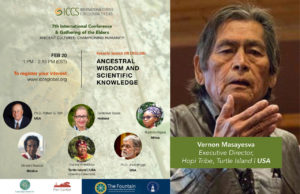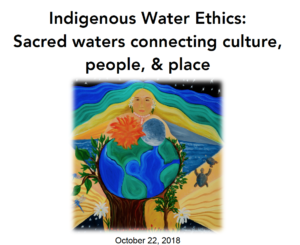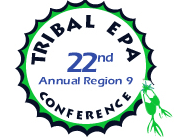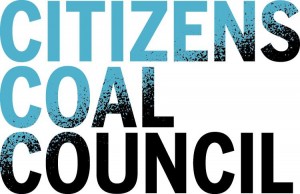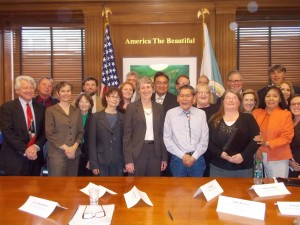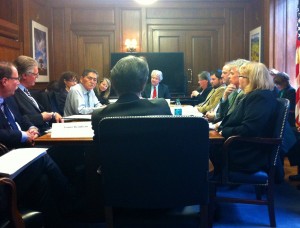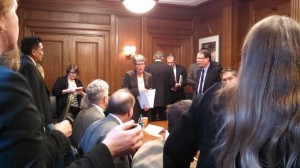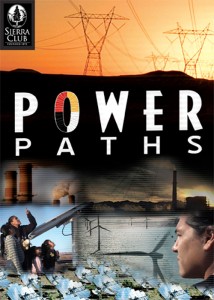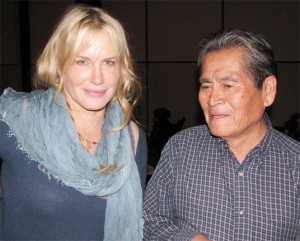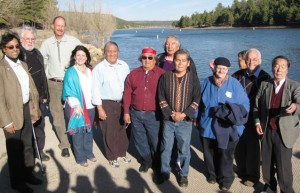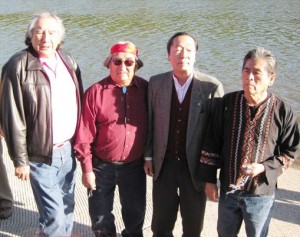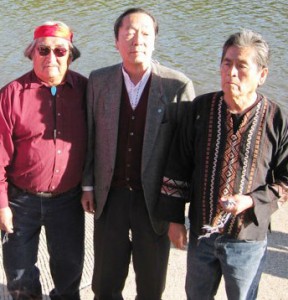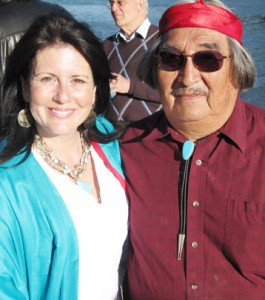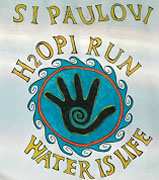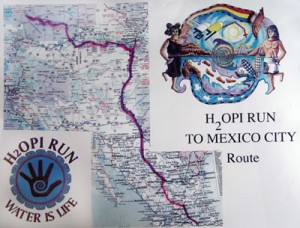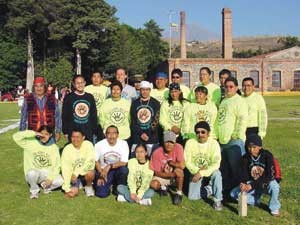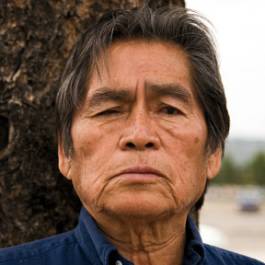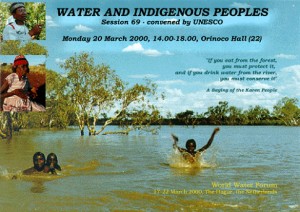Black Mesa Trust is dedicated to bringing awareness, education, and support to protect and maintain Sipaapu as a sacred, cultural, and traditional location. Join us for our May events to raise awareness and defend the most sacred. Our land, water & Hopi sacred sites. Please see our current events below.
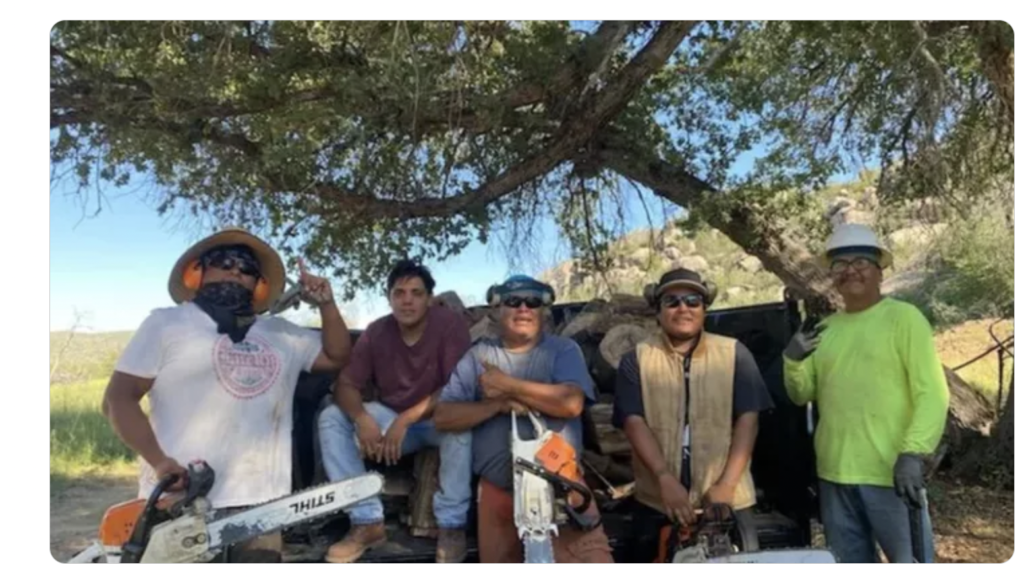
OPERATION: STOVE READY FOR THE HOPI PEOPLE Black Mesa Trust sponsors Pikunivi Wood Haulers
Pikunivi Wood Haulers is a grassroots organization whose mission is to ensure that families and elders in need, in our Hopi villages and communities are able to keep their homes warm and, therefore, safe this winter season. Please join us in this mission to provide Hopi families with “stove-ready” wood.
In the past, generations of Hopi families used coal to heat their homes which were free and readily available at the Peabody Coal Mine site. However, since the closure of the mine in 2019, families have had to quickly adjust from coal to burning wood to heat their homes. Wood has now become a necessary yet expensive resource.
Gathering and hauling wood requires that families have able-bodied individuals to cut, chop and lift large quantities of wood, have access to a truck and chainsaw(s), and have the financial resources to purchase gas for both a truck and chainsaw(s). The price of gas has made it even more challenging for financially stressed families to haul from wooded areas that are more than 100 miles away.
Due to these challenges, we, Pikunivi Wood Haulers, have taken the responsibility to provide families in need with “stove-ready” wood to keep their homes warm. Last year, our grassroots family organization with the assistance of Chizh for Cheii and Red Feather was able to provide 183 loads of wood to families. This year Black Mesa Trust, an environmental non-profit, is supporting our efforts.
Despite our limited financial resources this year, we continue to gather wood for our Hopi community. Your donation will support us with the financial resources to continue to haul more wood for our families.
Click Here to make a donation
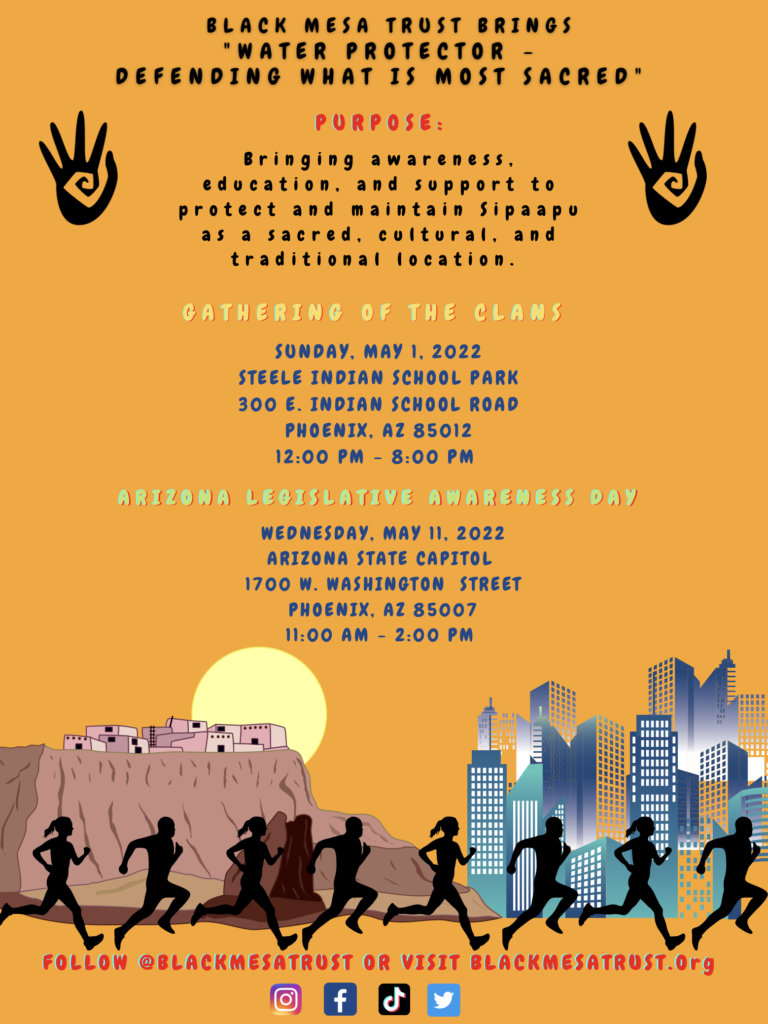
Black Mesa Trust presents
Gathering of the Clans
Water Protectors – Defending What is Most Sacred”
Sunday May 1st 12-8pm
Steele Indian School Park 300 E. Indian School Road Phoenix, AZ 85012
Featuring music and Entertainment from Ed Kabotie and Welcome from Vernon Masayesva, Executive Director, Black Mesa Trust
Guest Speakers
Martin Harvier, President, Salt River Pima-Maricopa Indian Community
Myron Tsosie, Arizona State House of Representatives, District 7
Carletta Tilousi – HAVASUPAI TRIBE
Carlton Albert–ZUNI TRIBE
Wendsler Nosie, Sr. or Naelyn Pike
Apache Strong Hold –SAN CARLOS TRIBE
Black Mesa Trust will present “Gathering of the Clans” Saturday April 30th in Phoenix Arizona. An outdoor event to raise awareness for the protection of rural water and groundwater in Arizona, as well as the long term preservation of sacred Hopi cultural and historical sites.
More details to come!
Black Mesa Trust dedicated to the long term preservation of land, water, cultural and historical sacred sites on Hopi raises funds for benefit “Save Sipapuni Rally” to take place Spring 2022
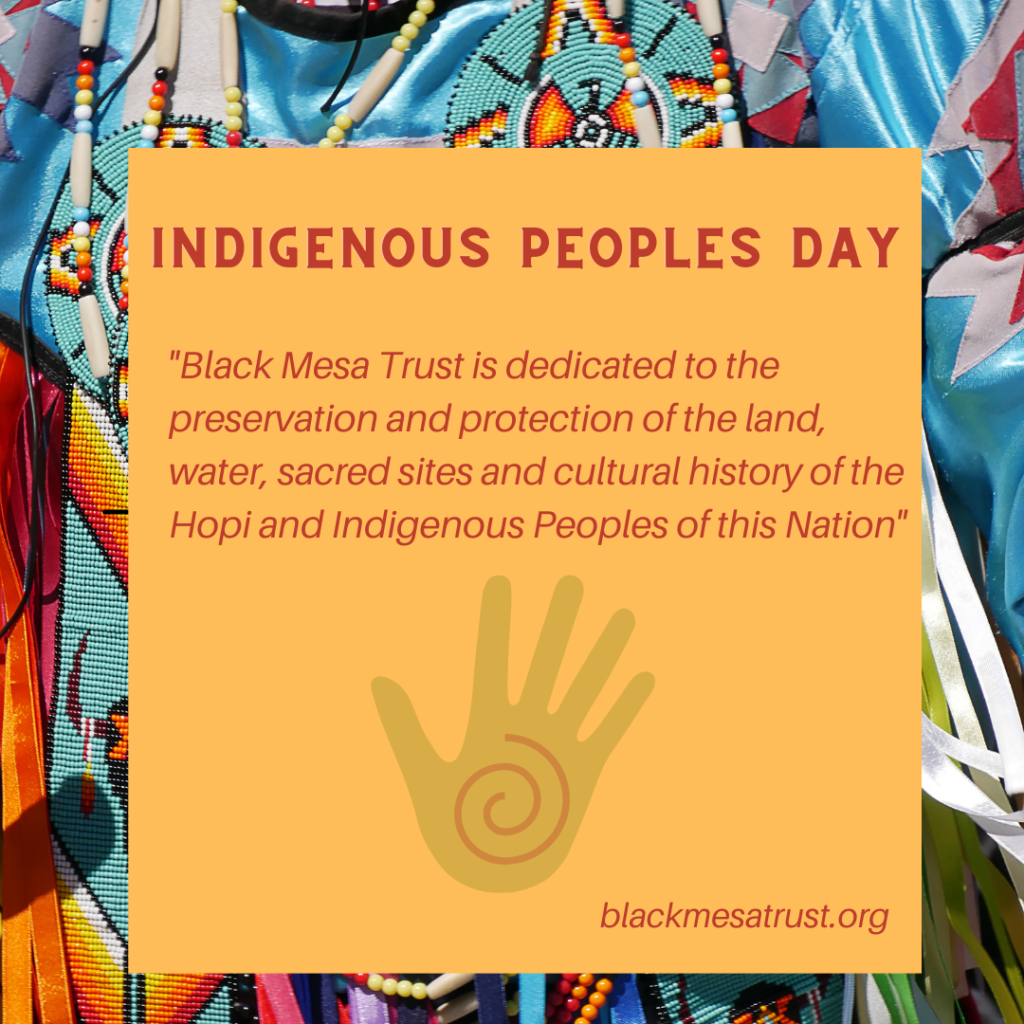


Hopi Clan Run Sunday October 10th, 2021
to benefit “Save Sipapuni Rally” and Black Mesa Trust
Sunday October 10th there will be a Hopi Clan Run to benefit Black Mesa Trust and to help continue our mission to save our sacred land, water, cultural and historical sites. Please click on the link below to register and feel free to donate to sponsor a runner and receive a specially designed t- shirt.
Executive Director Vernon Masayesva Keynote Speaker for The 7th International Conference and Gathering of the Elders – February 20th, 2021
Ancient cultures championing Humanity.
Ancestral Wisdom and Scientific Knowledge
watch the replay of the conference here:
https://www.youtube.com/channel/UCd2yUlHYhexeiSmSl4OruMA
BMT founders Vernon and Beky Masayesva presented “Hopi Water Declaration and Colorado Plateau: A Message of Hope” November 4th 6-7pm
at Restoring Balance: Climate Change, Traditional Teachings & Prophecies, Emerging at The Parliament of the World’s Religions Conference in Toronto Canada
https://parliamentofreligions.org/
Black Mesa Trust Executive Director Vernon Masayesva will speak at The Indigenous Water Ethics Conference
at Northern Arizona University October 22nd, 2018
“Western societies have manipulated the supply and distribution of water for consumption, development, mining, industry and other purposes to meet an immediate and every growing water demand and changing climate. Water ethics is a growing area of dialogue focused on managing water based on values, culture, and beliefs and co-existence with nature. For indigenous people, the fundamentals of “water ethics” are the foundation of how indigenous peoples value water as a sacred entity connecting culture, people and place. To Indigenous peoples “Mni Wiconi” or “Water is Life” and those who rise up to defend her right are “water protectors.” Recently, the rise of indigenous peoples to defend the rights of
water has grabbed national attention, with “NoDAPL at Standing Rock;” Honor the Earth’s campaign against Keystone XL which would impact indigenous lands; and “Stand with the Gwich’in to Defend the Artic against artic drilling among many more water protectors rising to defend sacred waters. What is indigenous water ethics and how can western societies learn from these fundamental values in water decisions? How can indigenous water ethics inform the growing field of water ethics? What are the rights and roles of Indigenous Peoples in recognition of their fundamental ancestral connections to water and environment? What does water sovereignty mean for indigenous people? How is this sovereignty being
impacted by new technologies and corporate strategies for mining, energy production, and agriculture? How might a new “ethics for water” be formulated to acknowledge the rights of Indigenous Peoples? This symposium brings together Indigenous water protectors to share their perspectives on water ethics and the impacts they face to protect sacred water and to create a dialogues to discuss synergistic advocacy and action towards changing the way western water is managed and perceived.”
“The whole system of water management and allocation was set up in a backward way, with the idea that water is being wasted if it’s not being primarily used to serve the people. There needs to be policy changes and a shift in the way people think about water.”
~ LaCroix Tribal member 2016
To attend please register here:
https://docs.google.com/forms/d/e/1FAIpQLSd6or-Sq0YzRRLva1imqVzXLccUgg0r-twqprH9JKPK5JuRmA/viewform
Hopi Film Maker Victor Masayesva to screen documentary “MAIZE” at American Indian Studies program, Los Angeles
MAIZE: A Film by Victor Masayesva, Jr.
- Event Type
- Film Screening
- Sponsor
- American Indian Studies, Native American House, Global Crossroads and Intersections Living Learning Communities / University Housing, and Student Cultural Programming Fee
- Location
- Pennsylvania Avenue Residence Hall, Saunders Lounge
- Date
- Oct 18, 2011 12:00 pm
- Speaker
- Victor Masayesva, Jr. (Hopi), Photographer and Videomaker
- Cost
- Free and Open to the Public
- Originating Calendar
- American Indian Studies Program
- Masayesva (Hopi) attended Princeton University and pursued graduate studies at the University of Arizona, Tucson. His numerous awards include fellowships from the Ford Foundation, the Rockefeller Foundation and the Southwest Association on Indian Affairs; and grants from the National Endowment for the Arts and the Arizona Commission on the Arts. He has been guest artist and artist-in-residence at the School of the Art Institute of Chicago, Princeton University, and The Yellowstone Summer Film/Video Institute, Montana State University. His videotapes have been exhibited internationally at festivals and institutions including the Native American Film and Video Festival, New York; and The Museum of Modern Art, New York. He lives in Hotevilla, Arizona.
MAIZE is a work-in-progress about the “human face of maize” from a southwestern perspective. Black Mesa trust is raising funds to complete this project and make it available to schools and universities free of charge.
Black Mesa Trust Executive Director Vernon Masayesva will be the keynote speaker and present the the environmental award at the 22nd Annual Region 9 Tribal EPA Conference October 15th-17th, 2014 Sacramento California.
For more information and to download the agenda visit:
http://region9tribal-epaconference.com/
April 2014 Meeting with Interior Secretary Sally Jewell
The Citizens Coal Council & Black Mesa Trust Executive Director Vernon Masayesva
with Bo Webb, Rob Goodwin, Jon Joshevama, Interior Secretary Sally Jewell
BMT Executive Director Vernon Masayesva, Beky Masayesva and Ann League.
Tuesday, April 8, 2014
A group of coal field advocates met with Interior Secretary Sally Jewell yesterday to express concerns about coal mining regulation nationwide, according to sources familiar with the meeting.
Participants — including Citizens Coal Council Executive Director Aimee Erickson, who organized the meeting, and Western Organization of Resource Councils Director Patrick Sweeney — urged Jewell to boost coal mining oversight under the Surface Mining Control and Reclamation Act and press states for stronger enforcement.
Louise Dunlap, who helped push for SMCRA in 1977, said that “in the 36 years since the law passed, Secretary Jewell is the first Interior secretary to meet with citizen leaders who had come together from every region in America and hear their evidence about how the coal industry is breaking the law.”
West Virginia advocates are pressing Interior’s Office of Surface Mining to crack down on West Virginia’s regulatory program under SMCRA, and the agency is investigating. A similar move is afoot in Illinois.
Lawmakers in Tennessee, which doesn’t have its own coal-mining regulatory program under SMCRA, are considering implementing their own. In response, advocates asked Jewell and OSM Director Joseph Pizarchik to be wary of such a move.
Ohio farmer and advocate Nick Popovich told Jewell, “Like many areas across the country subject to mining, the permit review and approval process in Ohio appears to be heavily biased to benefit coal operators at the expense of landowner rights and the environment.”
Advocates have also been pressing for tougher action against damage from longwall underground coal mining. The process is more efficient and technologically advanced but can cause greater immediate land subsidence and stream impacts.
“Longwall mining causes damage to streams and other water resources, and in many cases, this damage is irreparable,” said John Dawes, executive director of the Foundation for Pennsylvania Watersheds.
Regarding Western mining in states like Montana and Wyoming, Sweeney expressed concern about bonding and mine cleanups. “There’s some long-term reclamation issues that are substantive and important for us to address,” he said in an interview.
Then there’s the issue of coal ash. OSM is reviewing Pennsylvania’s program for reusing the coal combustion waste in mine reclamation. The agency is also mulling rulemaking on the issue.
Although Jewell made no promises, the advocates praised her for spending roughly an hour with them, asking questions and taking notes about their issues.
“Everyone was encouraged that Secretary Jewell welcomed well-documented information from coal field citizens showing coal industry violations and lax enforcement of SMCRA by state agencies, and how it’s affecting coal field communities and our natural resources,” Erickson said.
Coal companies have touted their reclamation efforts and say their activities are well-regulated. If anything, there is too much oversight, they say.
And although advocates want OSM to be more assertive and spend more money on enforcement, states have been complaining about what many call a regulatory heavy hand by the Obama administration.
The administration, for example, has increased its involvement in project-level disputes rather than overseeing state programs generally. And the White House fiscal 2015 budget blueprint includes $3.8 million to boost SMCRA implementation.
Greg Conrad, executive director of the Interstate Mining Compact Commission, a union of states, chafed at the budget request in documents submitted to congressional appropriators this week.
He said that “without more to justify the need for more oversight and the concomitant increase in funding for federal operations related thereto, Congress should reject this request.”
Conrad wrote, “The overall performance of the states as detailed in OSM’s annual state program evaluation reports demonstrates that the states are implementing their programs effectively and in accordance with the purposes and objectives of SMCRA.”
OSM is also working on its forthcoming stream protection rule, which may address some environmental group concerns but is deeply worrying the mining industry over potential job losses.
House Natural Resources Chairman Doc Hastings (R-Wash.) recently subpoenaed the Interior Department’s Office of Inspector General asking for an unredacted copy of its investigation into the rulemaking (E&ENews PM, March 25).
Separately, several groups today filed a Freedom of Information Act appeal to Interior’s Office of the Solicitor for a private version of a recent investigation into the Bureau of Land Management’s coal leasing program.
Power Paths Screening and Panel at The Autry Museum
On May 1st 2011 The Gene Autry Museum hosted an event in coordination with the Sierra Club to screen the film Power Paths and followed up with a panel discussion featuring the film’s creator Bo Boudart and a panel of Hopi and Navajo experts who spoke on the plight of the Black Mesa.
POWER PATHS offers a unique glimpse into the global energy crisis from the perspective of a culture pledged to protect the planet, historically exploited by corporate interests and neglected by public policy makers.
The film follows an intertribal coalition as they fight to transform their local economies by replacing coal mines and smog-belching power plants with renewable energy technologies. This transition would honor their heritage and support future generations by protecting their sacred land, providing electricity to their homes and creating jobs for their communities.
Their story is a parable for our time, when the planet as a whole hungers for alternatives to fossil fuels. For environmental trailblazers, it’s proof that going green is not only possible—it’s the only choice we have.
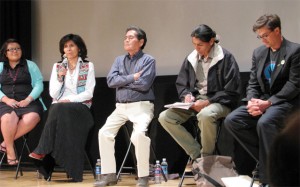 |
The POWER PATHS story begins in the 1960s, when two massive coal mines open on Navajo and Hopi reservations in Arizona. Between them, they produce enough coal to satisfy the unquenchable energy thirsts of Phoenix, Las Vegas and Los Angeles. They also comprise the single largest strip-mining complex in the world. For more than 30 years, the mines—and the Mohave Generating Station they supply—scar sacred native land, drain the natural aquifers and pollute the Southwestern skies.
actor and activist Daryl Hannah was in attendance
learn more about the film here:
http://www.pbs.org/independentlens/power-paths/film.html
http://powerpaths.dewdropmedia.com/toolkit/wecandothis/index.html
Black Mesa Trust Executive Director Vernon Masayesva was invited to speak at Madison Square Garden on May 3, 2009 to help celebrate folk singer Pete Seeger’s 90th birthday.
Masayesva addressed the audience at the celebration, dubbed the Clearwater Concert: Creating the Next Generation of Environmental Leaders, to talk about Black Mesa Trust’s struggle to save the N-aquifer, the sole source of drinking water for Hopi and Navajo people on Black Mesa, from Peabody Coal.
We give thanks for Pete’s contribution to the world and uniting all people through music.
Black Mesa Trust Hosts Water Braiding Conference
by Rosanda Suetopka Thayer
Navajo-Hopi Observer – nhonews.com
21 April 2009 FLAGSTAFF, Ariz. – Bridging contemporary western science and indigenous wisdom was the topic of a conference that was sponsored by Black Mesa Trust, The Center for Sustainable Environments at Northern Arizona University, Grand Canyon Trust and the Museum of Northern Arizona this past week at the Woodlands Radisson Hotel and Conference Center.
A number of internationally acclaimed scientists, teachers and artists including water science pioneer Dr. Masaru Emoto, painter/environmental space artist Lowry Burgess of Carnegie Mellon University and artist Michael Kabotie of the Hopi Tribe gathered with Black Mesa Trust Board members, over 200 adult participants and 20 young Hopi and Navajo student interns during a four day conference that began at the Hopi Reservation and ended at Lake Mary.
The focus of the conference was to deepen each participant’s appreciation of both traditional western science and their own tribal cultural science knowledge and blend both of these into a more purposeful learning and problem-solving experience.Looking to the future, Black Mesa Trust intentionally included the 20 young students in this science dialogue in the hopes that this conference could start them on a more focused path of future leadership and water issue problem resolve for generations to come.
The idea of “braiding” is to allow dialogue and explorations on the two systems of knowing and their unique approaches to nature, actions and teachings of water. Like a black and white Hopi weaving, its own character and endurance, the weaver braids two strands into one, which yields a stronger, more beautiful and responsive solution to today’s challenges.
With Black Mesa Trust’s mission of safeguarding, preserving and honoring the land and waters of the Black Mesa region, the “braiding” conference taught each of its attendees a new way of seeing and doing, of describing, understanding and most importantly of acting with global responsibility to protect Mother Earth.
Hopi Water Braiding Conference and Ceremony at Lake Mary, Flagstaff Arizona
with Hopi Pipekeeper Jerry Honowa, Dr. Masaru Emoto from Japan, BMT Founder Vernon Masayesva, BMT Advisor and Council member Sandy Fox.
read more here:
http://www.senaahq.bravehost.com/water/BMHostsWaterBraidingConf.htm http://bsnorrell.blogspot.com/2009/03/hopi-and-japanese-water-knowledge.html
http://www.nativevillage.org/Inspiration-/Braiding%20Through%20Water.htm
H2Opi Run Celebrates Sacred Water
H2opi Run started on the Hopi Reservation in Mungapi, Ariz. on March 2, 2006 with 27 runners who made the trip all the way to Mexico City to the Fourth World Water Forum ending on March 16. More than 5,000 attended this global water conference in the world’s largest city of 24 million people.
These Hopi runners generated avid world interest for several reasons — the biggest and most important a spiritual and environmental one — that water is essential for all life and water is one of the things that bond every man, woman, child, animal and plant and insect in the world.The second is that this message should be delivered in a dignified and traditional American Indian manner.This special water message was carried on the 27 pairs of human feet who made this historical journey because to Hopi, running is a traditional and culturally appropriate activity featured at dances, clan activities and village competitions throughout time.
It was a grueling, inspiring and deeply spiritual two-week trip for the H2opi Runners who have completed the now historic run to Mexico City to deliver the Hopi message of water’s importance to the world.
read more here:
http://www.navajohopiobserver.com/print.asp?ArticleID=4790&SectionID=29&SubSectionID=41
http://www.yesmagazine.org/issues/columns/1441
Presentation at
WATER AND INDIGENOUS PEOPLES
World Water Forum 2000
WHERE WATERS ONCE FLOWED…
THE IMPACTS OF LARGE SCALE COAL MINING ON HOPI AND NAVAJO LANDS
VERNON MASAYESVA
Since 1970 the Peabody Coal Company has been withdrawing an average of 4,000 acre feet of water annually from the Navajo or N aquifer in Northern Arizona for the purpose of operating a coal slurry line. The slurry line carries coal mined at the Black Mesa strip mine (the largest in the U.S.) 273 miles to the 1,580 megawatt coal-fired Mohave Generating Station in Laughlin, Nevada. According to the United States Geological Survey (USGS) the N aquifer is a pristine source of primarily ice age (10,000 to 35,000 year old) water that underlies Hopi and Navajo lands. For centuries, the aquifer has served as the primary drinking water source for both tribes and, until recently, has provided a steady, year-round flow of water to springs located on the reservations.
According to people who know the land, these springs are now drying up, possibily because the annual rate of aquifer withdrawal exceeds the rate of natural recharge. The USGS has estimated that the natural recharge rate for the confined N aquifer is 2,500-3,500 acre feet per year. Since Peabody began pumping water from the aquifer, water levels in wells that provide drinking water for the Hopi and Navajo communities have also dropped dramatically. Hopi hydrologists have warned that these wells could run dry within the next century. And for the Hopi and the Navajo, “water is the source of the life.”
The Peabody coal slurry line is the only one in existence in the U.S., as slurry lines are generally considered a non-economical means to transport coal. In fact, the slurry line was built in part as an experiment to test equipment intended to be used in other countries like China and Russia. The Peabody slurry line bases its economic viability on the ability of the company to obtain water at a price well below its true market value. When the original water lease was signed in 1966, the Hopi payment was only $1,67 per acre foot. No one at the time thought that water pumping for the purpose of supplying the slurry line would reach the present-day level of 4,000 acre feet per year.
In 1998, Peabody paid the Hopi and the Navajo tribes a total of $3.78 million in royalties for the use of 4,032 acre feet of water or 1.3 billion gallons. $ 3.78 million for 4,032 acre feet of water amounts to 3 mills ($0.003) per gallon or 30¢ per 100 gallons. Yet if sold into the marketplace at the current average Bottled Water Industry wholesale bottled water price of $1.30 per gallon (retail price is $5 per gallon), this same amount of water would be worth $1.7 billion.
According to Hopi hydrologists, the present rate of N aquifer withdrawals by industrial, municipal, and domestic users cannot sustain tribal communities in the Black Mesa region. A solution is urgently needed to help Navajo and Hopi People reduce the extraction of pristine waters below natural recharge levels without jeopardizing the economic benefits of the mining operations.
Vernon Masayesva was born in the Third Mesa village of Hotevilla, deep in the Hopi homeland. Born into the Coyote Clan, one of Masayesva’s responsibilities is to serve as a protector of Hopi land, water and people. Masayesva, 58, walks the Middle Ground between Hopi and Euro-American societies. Fluent in Hopi language and culture, Masayesva is also a consummate advocate for ecological and human rights. He studied political science for his Bachelors degree and received his Masters in education administration from Central Michigan University. Upon his return to Hopiland, he headed the first Hopi-run contract school. He was elected to the Hopi Tribal Council and served as Chairman and head of the Hopi Tribe from 1989-1993, becoming deeply involved with the defense of water and fossil aquifer. Masayesva was selected for Outside Magazine’s Environmental Honor Roll as a result of his defense of Black Mesa water and his legislative work to protect burial sites in Arizona, and was declared an “Environmental Hero” by the Grand Canyon Trust.
for more info
http://www.waternunc.com/gb/secWWF.htm
http://portal.unesco.org/science/en/ev.php-URL_ID=3854&URL_DO=DO_TOPIC&URL_SECTION=201.html
http://www.worldwatercouncil.org/index.php?id=1

